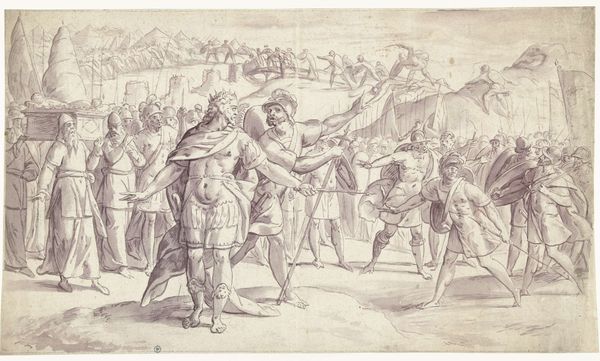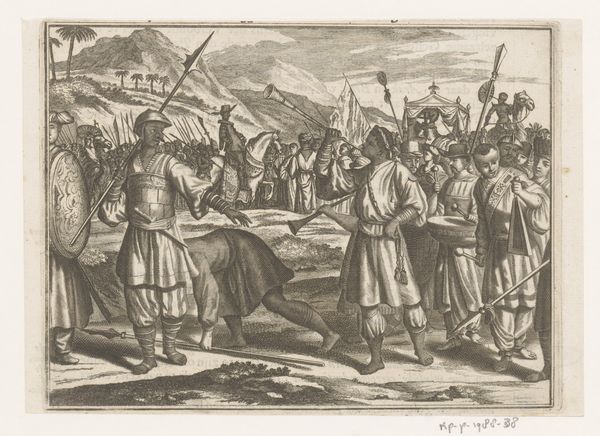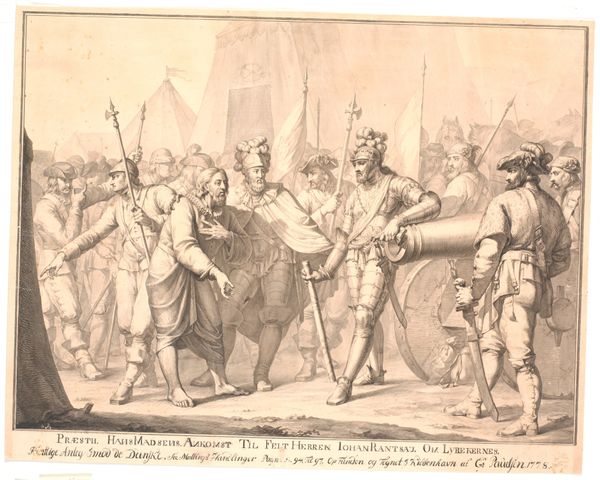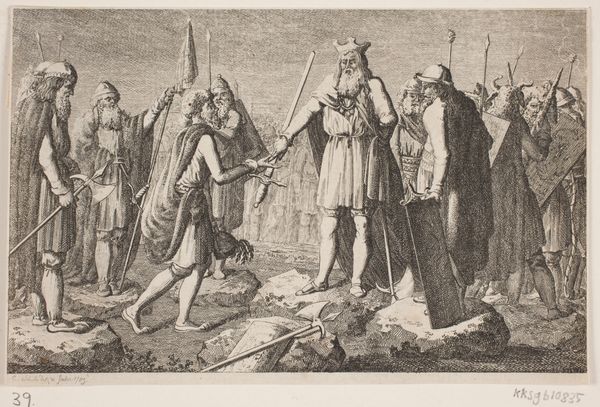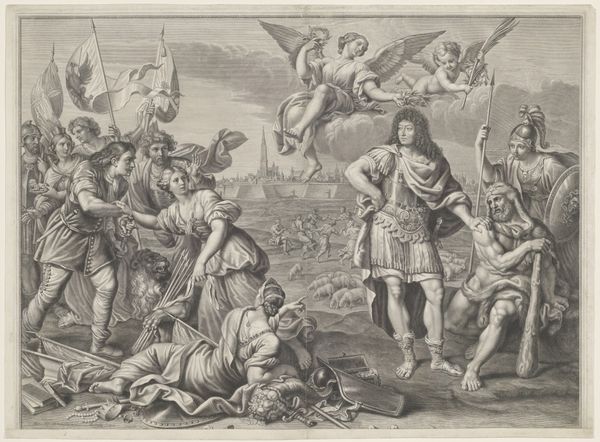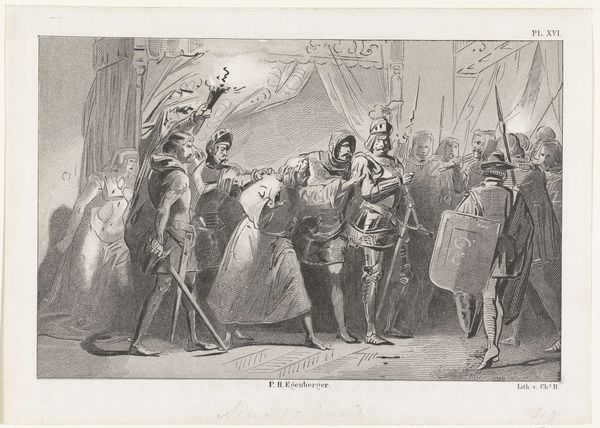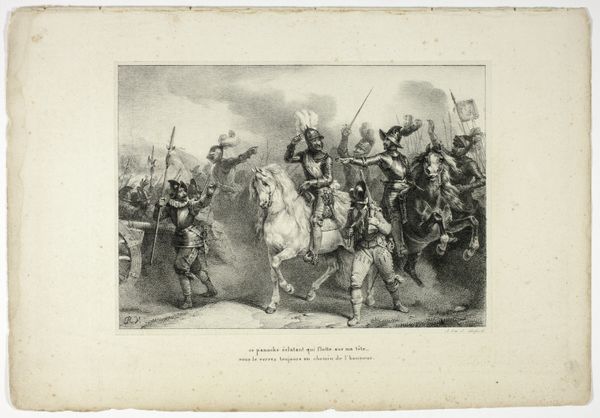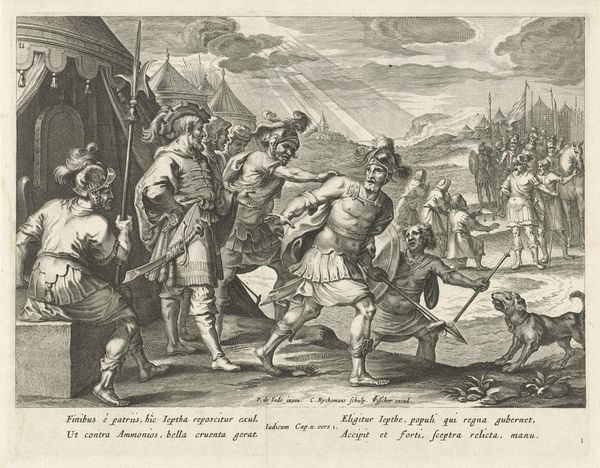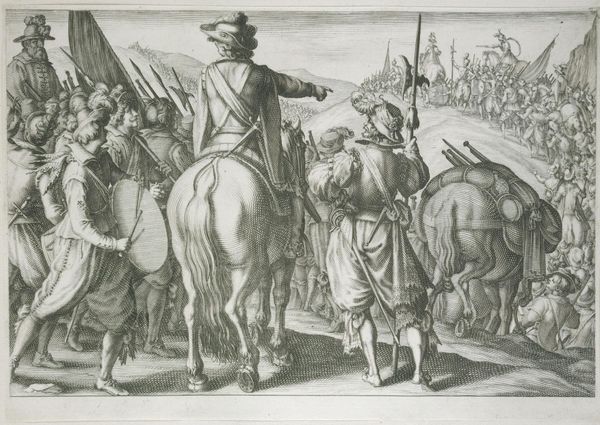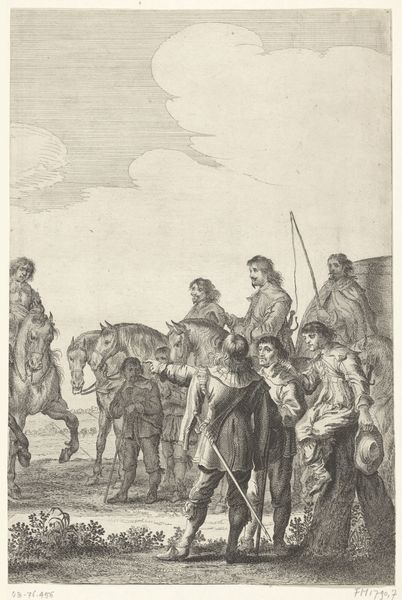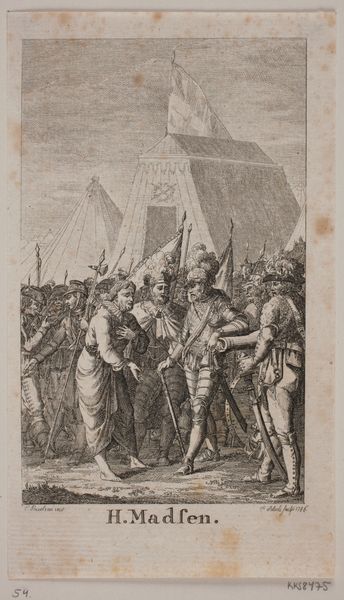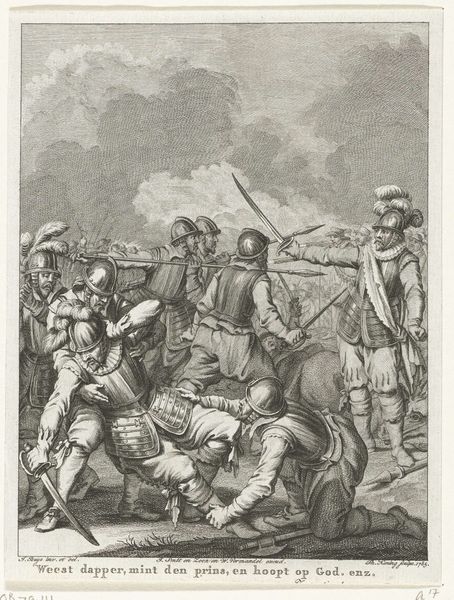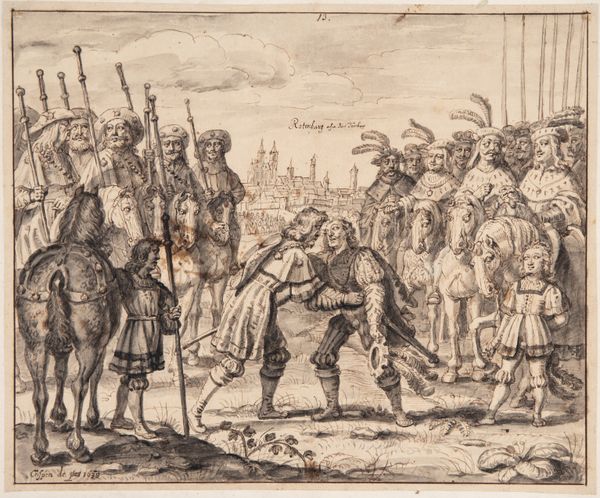
Julianus bezorgt de gegijzelde zoon terug bij de leider der Chamaven, ca. 350-363 1853 - 1861
0:00
0:00
christiaanlodewijkvankesteren
Rijksmuseum
print, engraving
#
narrative-art
# print
#
old engraving style
#
figuration
#
group-portraits
#
history-painting
#
academic-art
#
engraving
Dimensions: height 135 mm, width 207 mm
Copyright: Rijks Museum: Open Domain
Curator: This is "Julianus bezorgt de gegijzelde zoon terug bij de leider der Chamaven, ca. 350-363" by Christiaan Lodewijk van Kesteren, created between 1853 and 1861. It's currently held here at the Rijksmuseum, rendered in an engraving technique. Editor: The cross-hatching immediately catches my eye. It gives the scene such a stark, almost austere feel. A lot of lines implying the mood and texture; it appears more about narrative than realistic representation. Curator: The engraving leans heavily into classical themes – Roman soldiers, a staged return. What strikes me are the symbols. Julianus, depicted as magnanimous, returning the son, signalling a moment of potential peace, though loaded with political calculation, wouldn't you say? Editor: Indeed, that return – it speaks of resources: labor and time – invested in producing it, for propagating narratives of power. The engraver meticulously rendered each figure. Who was consuming images like this and what was the role of reproducible images in consolidating a historical idea of “Roman” virtue? Curator: I’m wondering about its place in Dutch national identity during the 19th century. Julianus's image may tie into deeper archetypes. This action becomes representative of broader principles of justice or perceived cultural superiority – something that goes beyond this single act. Editor: The image itself becomes a commodity. We’re in the age of mechanical reproduction; images are circulated widely. Consider what it meant to produce, distribute, and own images relating such historical scenes. Each print carried inherent material and labor costs, contributing to the art market's complex mechanics. Curator: A moral example manufactured at scale. Interesting indeed! This return carries that symbolic weight into living rooms and classrooms through prints like this. Editor: To see the final product separated from its initial intent makes you reconsider production for disseminating an idea versus documenting a truth. I wonder what traces remain of those historical consumption patterns. Curator: Thank you for the consideration about production context! It enriched my appreciation, pushing the symbolic beyond simple virtuous gesture to something deeply ingrained in material realities. Editor: And for me, you have reframed the picture by exposing symbols that may serve in contemporary contexts. A reminder of art's place in social production.
Comments
No comments
Be the first to comment and join the conversation on the ultimate creative platform.
